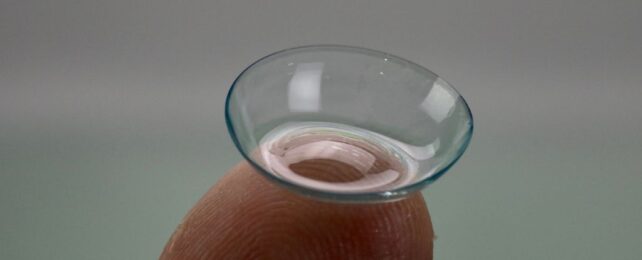A lab certified by the United States Environmental Protection Agency (EPA) has detected signs of PFAS 'forever chemicals' in 18 popular brands of contact lenses.
The results were published by a blog called Mamavation, which promotes itself as a "trusted source for moms looking for non-toxic product recommendations".
According to the site, all the contact lenses tested contained traces of organic fluorine, a marker for PFAS, ranging from 105 parts per million (ppm) to 20,700 ppm.
Whether or not that is dangerous to consumer health is unknown. The EPA only monitors PFAS levels when they end up in drinking water. Federal agencies don't regulate or track the actual manufacturing of most forever chemicals or study their health effects.
Pete Myers, a chief scientist for Environmental Health Sciences, reviewed the findings. Environmental Health Services is a non-profit promoting a better understanding of how human health and the environment intertwine.
While comparing safe drinking levels of PFAS to the absorption of contact lenses is inherently imperfect, "it's worth noting that all of the contact lenses tested exceeded 100 ppm, which is equivalent to 100,000,000 ppt (parts per trillion), or 50,000 times higher than the highest level deemed safe in drinking water by the EPA," Myers tells Mamavation.
PFAS (per- and polyfluoroalkyls) are a group of widely used synthetic chemicals that are stain- , water- , and oil-resistant. That also means they do not break down easily in nature.
Regularly used for more than half a century in non-stick cookware, water-resistant cosmetics, water-repellant clothing, or stain-resistant fabrics, PFASs have spread globally into water sources, rain, soil, animals, and us.
Like microplastics, scientists are scrambling to determine what risk these chemicals might pose to our health.
The big questions that need to be answered are twofold: Which of the more than 10,000 PFAS are dangerous? And at what concentration?
Unfortunately, we lack complete answers to both, although recent studies have connected some PFAS to cancers and immune system issues. The findings have prompted the European Union to consider a sweeping ban on most PFASs.
Meanwhile, the US EPA recently reduced its safety thresholds for some forever chemicals in drinking water, from 70 ppt to between 0.004 and 0.02 ppt.
That's a huge adjustment that could mean potentially half the US population is now considered exposed to harmful concentrations of forever chemicals.
In 2022, Maine became the first jurisdiction in the US to mandate that manufacturers report on PFAS levels in non-essential products. Other states are following suit.
But contact lenses don't fall into the non-essential category.
The report from Mamavation is concerning not only because it suggests potentially harmful chemicals may be coming into contact with millions of eyes daily but also because it took an online blog to reveal this information, not a government agency.
Terrence Collins, a chemist at Carnegie Mellon University, explains to Mamavation that fluoropolymers like PFAS are cheap and effective materials for manufacturers to use for contact lenses. But he is frustrated by the lack of federal requirements for chemical disclosures and testing.
"No one today can tell you that fluoropolymer exposures are safe because no jurisdiction has been demanding the development and scrutiny of appropriate safety testing," says Collins.
"I advise that such contact lenses be rigorously avoided."
At this point, however, asking the average person to avoid PFAS is near impossible, especially when so few alternatives exist. You can stop using non-stick cookware and other products that are known to contain high levels of PFAS, especially on parts of the body that can absorb them. Still, without transparent reporting from manufacturers, you will likely be exposed to forever chemicals against your will.
In August 2022, some scientists warned that the world had crossed a critical safety threshold for synthetic chemicals with potentially hazardous effects. If even some of these chemicals are dangerous, it could have disastrous results.
The only way to combat the threat would be to clean up Earth's rain, soil, animals, and plants. And we don't yet know how to do that.
